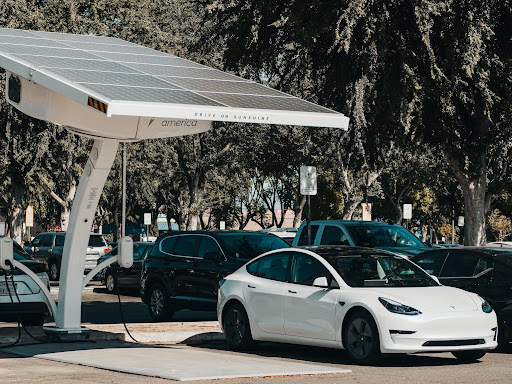Look How Far Electric Vehicle Manufacturing Has Come

Most electric vehicles (EV) fanatics know that the EV is nothing new. However, the casual observer might be surprised to learn that these vehicles go back to the 1800s. While Thomas Davenport, one of the first developers of the EV, might not recognize the Tesla as an iteration of his invention, both are a part of a history of innovation, hard work, and commitment to the cause. Well look at the EV trends and electric vehicle designs that have pushed the nation forward.
The First Rise and Fall
In 1834, the early EV looked a lot like a battery-powered toy and could only go a few feet. It was largely made to prove that the possibility was there. In 1890, a chemist in Iowa added electricity to a six-passenger vehicle that could go up to 14 mph. The electric vehicle design prototype might have been basic, but it caught some serious interest.
By the time the late 1800s rolled around, people adopted the EV in droves, particularly in cities. They were cleaner and more efficient than gas counterparts, and by 1900, around 33% of all cars on the road were EVs. Once the internal combustion vehicle debuted, though, all bets were off. They were cheaper, faster, and could go farther than EVs, and it wasnt long before EVs were largely forgotten about.
The Oil Crisis
Once the oil crisis hit in the 1970s, it was a natural reaction to go looking for energy alternatives. The motivation here was two-fold. The US wasnt just vulnerable to the pricing exploits of foreign exporters, the country was also experiencing serious air pollution that was becoming harder and harder to ignore.
While the development during this time didnt quite take off, the world also didnt have to wait another 70 years before there was a resurgence. In 1997, the Prius was the first mass-produced hybrid EV, and it paved the way for a new class of cars, trucks, motorcycles, etc. After the call for new kinds of transportation, a call that was heard all over the world, it seemed clear that we were entering a new age.
Manufacturing Basics
The first Prius used a nickel metal hybrid battery, which was first patented in 1986. While the Prius originally came out in Japan in 1997, it didnt hit the US until 2000. Once it did, though, it was immediately picked up by some of the most prominent people in the world. When Leonardo DiCaprio is driving around an environmentally-friendly place, its going to make waves. From 2000 to 2010, the Prius was the number one best-selling hybrid in the world.
In 2006, a small startup in Silicon Valley, known as Tesla Motors, pledged a new car that could go in excess of 200 miles per charge. Just four years later, the Department of Energy gave the company a $465 million loan to advance their technology. In 2012, the first Model S came out of the assembly line. Today, the company makes more than a million vehicles every year. Tesla’s success has made EVs more of the norm than the exception in certain states. Thanks to the lower price of EVs like the Model 3, which started in the $30,000s when it debuted, Tesla’s manufacturing has gotten much of the public to a place where EVs are a practical purchase.
Trends Today
The latest trends in EVs represent a new phase in the industry:
- Automation: From the raw materials to the subassemblies to the final product, automation is used to reduce cost and improve quality. At Tesla, robots are used to lift cars and align them to the utmost precision.
- Longer drives: Every year, new battery technologies are being used to improve the range of EVs. While charging stations remain few and far between in many places in the US, the goal is to give cars enough power to handle even the longest road trips. In 2023, the Lucid Air boasted a 516 mile charge.
- Sectors: The more EV manufacturers there are, the more suppliers they need. The interest has sparked a variety of new companies, including those for battery cells, inverters, and motors.
The Future of EVs
LINTEC Automotive is excited about the next phase in EVs, and we’re ready to work with engineers for next-gen automotive adhesives. As with the EV process, research and development is a critical part of our success. From the materials to the results, we keep pace with the industry so our customers get the most effective solutions on the market. Get in touch with our team for more information on how we can assist your electric vehicle project with protective automotive films.

